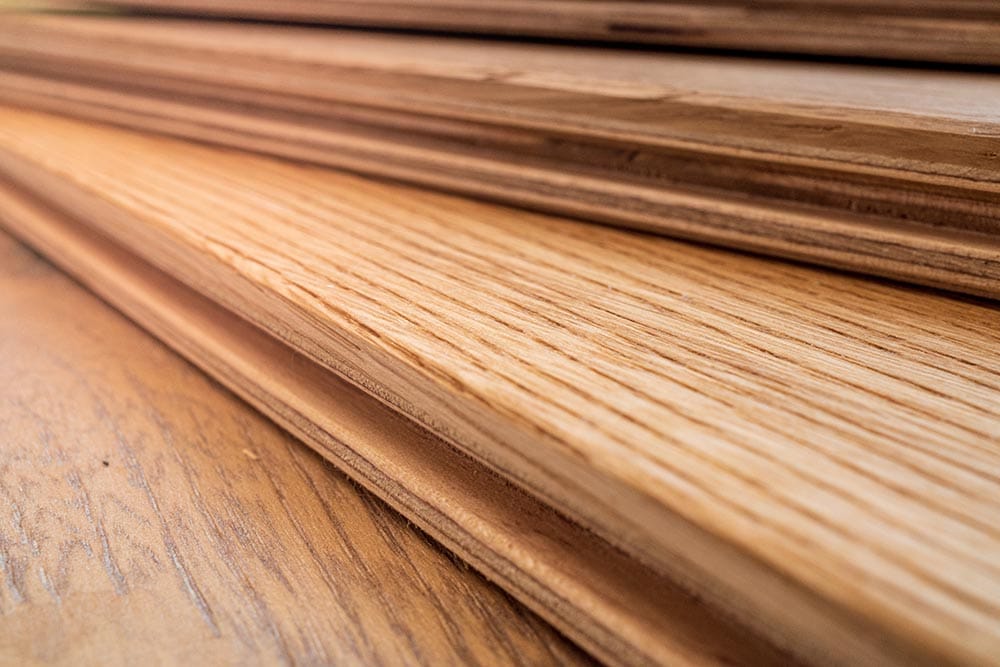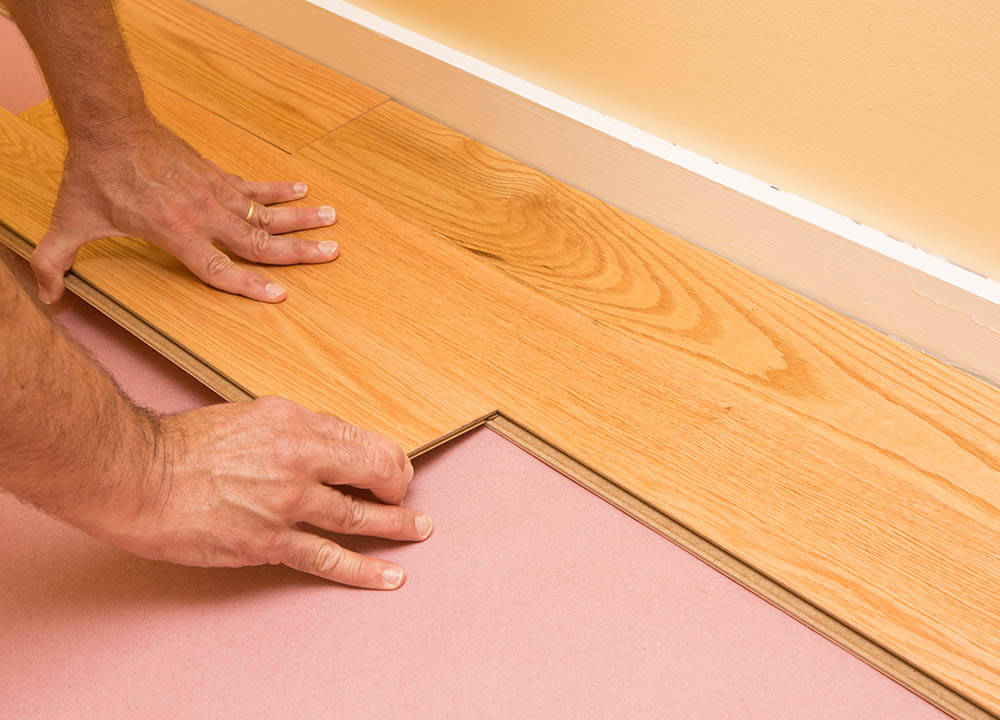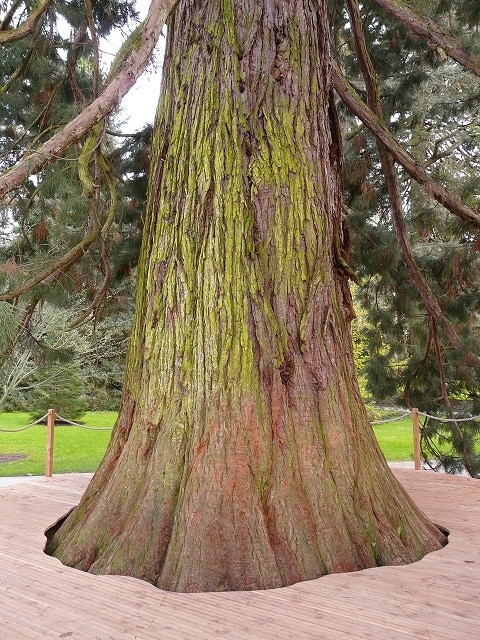Is Redwood a Hardwood? Pros, Cons, Characteristics, & FAQ
-
Pete Ortiz
- Last updated:

There are many options when it comes to the finishing of your home’s floors. Certainly, designers and manufacturers are not out of ideas and are not shy about implementing them. However, one-floor finishing that has stood the test of time is redwood floors.
Redwood is a type of softwood that naturally has a red to a purplish hue. You can get redwood wood from trees such as Coast Redwood, Sequoiadendron, and Giant Sequoia. In addition, redwood timber makes for a good furnishing building material and not to mention—superb flooring.
This article will look at the characteristics of redwood and why you would want to use it for your flooring needs. So put on your carpentry hat and keep reading to learn more.
 Is Redwood a Hardwood or a Softwood?
Is Redwood a Hardwood or a Softwood?
Redwoods are not hardwood trees but softwood. This tree species is coniferous or, in other words, has needle-like leaves that are usually evergreen, which are softwood characteristics. They also grow quickly and can be cut and worked with easily. In addition, redwood trees tend to stay green throughout the year and do not shed their leaves as their hardwood counterparts do.
Redwoods also make for good construction material and are commonly utilized in building and furniture construction, as with other softwoods. In addition, redwood tends to have more resistance to fungal and insect infections due to the chemicals found in its leaves and stem.
But you would be forgiven for thinking that redwood is soft because it’s a softwood species. Wood can only be categorized in one of two ways: hardwood or softwood. However, this is not because they are subjected to a hardness test. The reason is far more interesting.
The structure of a seed determines a tree’s wood type. For example, hardwood trees have a structure around their seeds in the form of a fruit, shell, or some other protective substance. While on the other hand, softwood’s seeds are exposed and unprotected.
So if you have any restrictions about using redwood because it’s a “softwood,” don’t. It has nothing to do with the wood’s grain structure or hardness properties. For example, a Yew tree’s wood, which is a softwood, is much harder than Oak, which is a hardwood.

Characteristics of Redwood
- The redwood tree is one of the tallest tree species in the world.
- It has a reddish-purplish hue that comes from natural extracts present in the wood, making it resistant to fungal and insect infestation. The rule of thumb is that the more reddish the wood is, the more resistant it is.
- Redwood can be sawn in a smooth or rough texture, depending on how you want it. It can also be cut to reveal a marbled pattern or the cross-section of its growth rings.
- As redwood structures age, they turn into a silver-gray color after sunlight exposure. However, when exposed to wet dump conditions, they tend to turn to a blackish hue.
- Redwood is less dense than hardwood trees are. They are also lighter and softer.
- Redwood trees are green throughout the year and do not shed their leaves.
- Redwood has a weak shear strength but good tensile strength.
Is Redwood Good for Flooring?
If you’re in the market for new floors or looking to replace your old ones, there are many options for you to choose from. They include both artificial and natural materials that will give your floors a different feel and texture. However, redwood floors are an excellent idea if you don’t want to go with an artificial material.
Redwood has a red purplish hue that is aesthetically pleasing. It also has an excellent grain that will look good on any part of your house. The wood might not be from a hardwood species, but it can certainly take a beating. And when you install your floors, you don’t have to worry about replacing or refurbishing them for a long time.
Another reason redwood is suitable for your floor is its environmental impact. However, this comes with a caveat. Redwood trees are some of the oldest tree species. As such, they are majestic and deserve protection from human exploitation. In fact, the small number of redwood forests and trees still in existence are under protection and should continue to be for future generations.
Having said that, because redwood is a softwood species, it grows considerably faster than its hardwood counterparts, making it an excellent species to plant for harvesting. This also means it consumes fewer resources and takes away pressure from other endangered species. So if you’d like a wood flooring finish without the extra environmental guilt, find redwood that has been responsibly grown and harvested.

- Affordable: Compared to other wood species with similar properties and quality, redwood is an excellent economical alternative, if not better.
- Stylish: Redwood is naturally beautiful and comes in a wonderful reddish hue and a marbled grain that will help your floors stand out.
- Durable: Redwood furniture and fixtures, even those outside, are known to last a long time.
- Easy to work with: This wood cuts quite nicely, is easy to hammer nails into, and you can finish it in various ways.
- Renewable resource: Redwood trees grow fast, which means they can be planted and harvested relatively fast, unlike hardwood trees. So you’re not sacrificing a forest when installing your floors.
- Pest and fungal resilient: Redwood has a natural chemical that discourages pests and fungi from attacking it. Therefore, you don’t need to add as many protective measures as you would with other wood species.
- Stains easy: Redwood takes varnish and paints pretty well.
- Environmental destruction: Even though some redwood timber comes from renewable sources, the harvesting of natural species is still taking place, further reducing the numbers in the wild.
- Wear and tear: As with any wooden floor; redwood will scratch and wear if placed in a high-traffic area. This is because softwoods tend to be less dense than hardwood. So you should avoid dragging heavy objects on the wooden floor and maintain it regularly.
- Not fire resistant: Installing wooden floors and not just necessarily redwood puts you at risk of fires. You have to fire-treat it, which adds to the installation cost if you’re to negate this risk. Options like marble and other inflammable artificial floors have a lower risk factor.
- Not weather resistant: Unlike hardwood timber, redwood structures left out in the elements need treating to resist the weather. If not, they tend to turn dark and eventually deteriorate.
FAQs
1. Where Can You Find Redwood?
You can find redwood trees in California along the central coast to southern Oregon. However, they are not found any further than 50 miles from the coast. Even though redwood trees used to be plentiful in North America, these few locations we’ve mentioned are some of the few still in existence.
2. Do Knots in Redwood Matter When Flooring?
In essence, knots don’t really matter. Remember, redwood is sold in grades. The higher the grade, the better the grain’s quality and color, and it also tends to have fewer knots. But a little character never hurt anybody if you can’t afford the big buck option.
3. Does Redwood Dent?
Unfortunately, it does. However, not as easily as some other softwood options. It’s still a good floor finishing, and it’s no breadstick by any means, but you do need to take care not to dent it. So don’t drop or drag anything heavy on them, and you will be okay.
4. Are Redwood Trees Endangered?
Natural redwood trees are endangered and currently enjoy protected status. But some trees slated for harvesting still need protecting. Preserving this tree species is essential for future generations.
5. How Easy is it to Clean Redwood Floors?
If your floors were treated and installed correctly, you should be able to easily clean them as any other wooden floor. They do not need any special attention or products to clean. Regular detergents and bleach will do the job just fine. Just ensure to wipe any excess water and keep them dry to avoid rotting.
 Conclusion
Conclusion
Picking the right floor for your home is a decision that most of us have to live with for a long time. It’s also essential as the floor plays a big part in the look and character of a home. However, redwood is one of those choices that will look good no matter the type of home you have. It has beautiful aesthetics and structural properties that will greatly add value to your home.
So if you were undecided about using redwood, we say go for it, and you will love the final result.
- https://www.civilclick.com/hardwood-vs-softwood/
- https://www.amerifirst.com/amerifirst-blog/pros-and-cons-of-softwood-flooring#:~:text=The%20best%20quality%20redwood%20comes,planks%20to%20interrupt%20the%20flow.
- https://www.diffen.com/difference/Hardwood_vs_Softwood
- https://www.quaytimber.co.uk/blog/5-reasons-why-redwood-is-goodwood
- https://www.savetheredwoods.org/redwoods/
Featured Image Credit: RichardMc, Pixabay
Contents

 Is Redwood a Hardwood or a Softwood?
Is Redwood a Hardwood or a Softwood? Conclusion
Conclusion